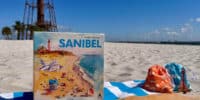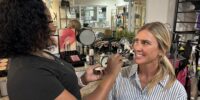The Creature Behind the Shell
Seashells are an exciting find during a trip to Sanibel Island. However, they didn’t just come into being on their own, they had a little help from the creatures that once called them home. Learn about some of the animals that help to make the shells and specimen we all love to hunt and search for!
Mollusks
Mollusks make up a huge percentage of marine life. Mollusks lack a spine but make up for it with their colorful and plentiful shells. A mollusk ranges from a tiny snail to a gigantic octopus. Sanibel’s star shell is the scaphella junonia, or just Junonia for short, which is an aquatic snail. As you venture across Sanibel’s beaches, if you’re lucky, you might encounter one of these exotic spotted creatures. Another favorite snail of Sanibel is the Sinistrofulgur perversum, or Lightning Whelk. This is another species of large snail. Always make sure to check your shells before collecting them to make sure they are no longer home to any creatures.
Bivalves
Clams and oysters are classified as mollusks. However, they belong to a special group called bivalves. A bivalve is an aquatic animal that has a pair of shells that open and close together. Sometimes, bivalves will use their hinged shells to propel themselves through the water, since they don’t have fins or traditional legs to move around with. Bivalves can come in small and giant varieties. Clams are a great example, which ranges anywhere from 4.76 centimeters to 137 centimeters!
Crustaceans
These shelled animals are usually crawling around on the beach’s warm sand or the ocean’s rocky floor. Crustaceans include familiar animals like crabs, lobsters, and shrimp. Unlike mollusks whose shells are made from calcium carbonate, crustaceans house shells made of a hard substance called chitin. Chitin is a common material for animals with exoskeletons. Chitin exoskeletons help protect marine animals from predators and also help them retain water.
photo provided by Sanibel Sea School
Echinoderms
Echinoderms are some of the most fascinating finds. They include starfish, sea cucumbers, sand dollars, and sea urchins. Echinoderm means that these animals have “spiny skin.” However, they boast the most intriguing “shells.” The hard outer layer of echinoderms are actually exoskeletons that do not shed from the body. In fact, some echinoderms, specifically starfish, are able to regenerate new limbs to replace those that have been lost! It is no wonder that aquatic life at Sundial Beach Resort and Spa is so alluring.









